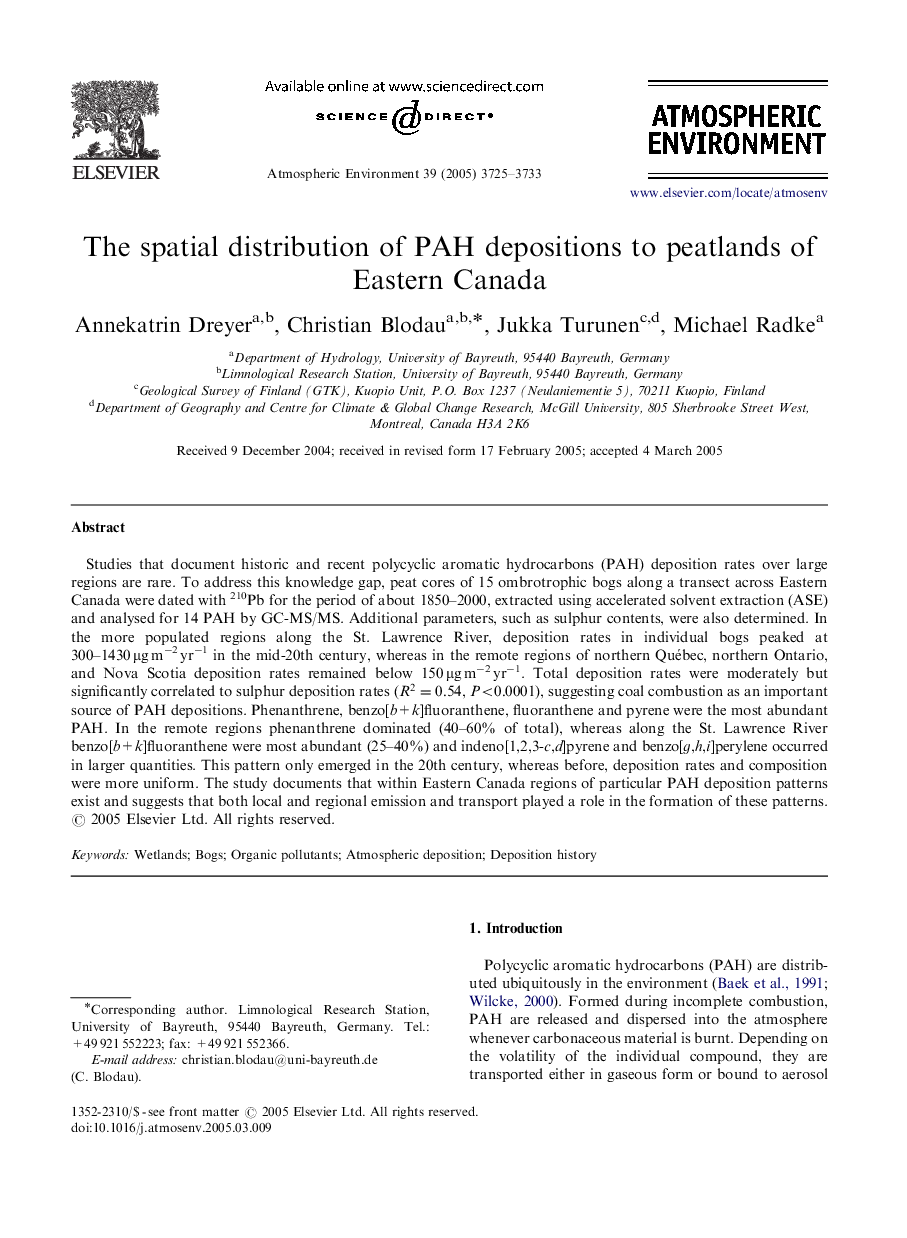| Article ID | Journal | Published Year | Pages | File Type |
|---|---|---|---|---|
| 4445388 | Atmospheric Environment | 2005 | 9 Pages |
Studies that document historic and recent polycyclic aromatic hydrocarbons (PAH) deposition rates over large regions are rare. To address this knowledge gap, peat cores of 15 ombrotrophic bogs along a transect across Eastern Canada were dated with 210Pb for the period of about 1850–2000, extracted using accelerated solvent extraction (ASE) and analysed for 14 PAH by GC-MS/MS. Additional parameters, such as sulphur contents, were also determined. In the more populated regions along the St. Lawrence River, deposition rates in individual bogs peaked at 300–1430 μg m−2 yr−1 in the mid-20th century, whereas in the remote regions of northern Québec, northern Ontario, and Nova Scotia deposition rates remained below 150 μg m−2 yr−1. Total deposition rates were moderately but significantly correlated to sulphur deposition rates (R2=0.54R2=0.54, P<0.0001P<0.0001), suggesting coal combustion as an important source of PAH depositions. Phenanthrene, benzo[b+k]fluoranthene, fluoranthene and pyrene were the most abundant PAH. In the remote regions phenanthrene dominated (40–60% of total), whereas along the St. Lawrence River benzo[b+k]fluoranthene were most abundant (25–40%) and indeno[1,2,3-c,d]pyrene and benzo[g,h,i]perylene occurred in larger quantities. This pattern only emerged in the 20th century, whereas before, deposition rates and composition were more uniform. The study documents that within Eastern Canada regions of particular PAH deposition patterns exist and suggests that both local and regional emission and transport played a role in the formation of these patterns.
